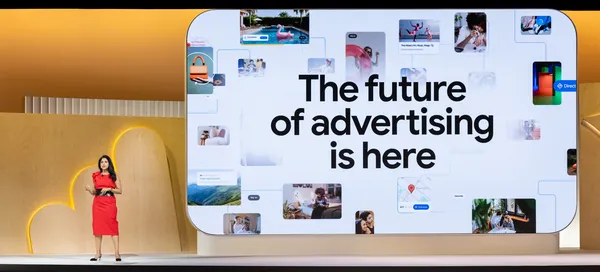 At Google Marketing Live, we shared our next-gen AI-powered marketing solutions.
At Google Marketing Live, we shared our next-gen AI-powered marketing solutions.
Google Marketing Live 2025
 At Google Marketing Live, we shared our next-gen AI-powered marketing solutions.
At Google Marketing Live, we shared our next-gen AI-powered marketing solutions.
 At Google Marketing Live, we shared our next-gen AI-powered marketing solutions.
At Google Marketing Live, we shared our next-gen AI-powered marketing solutions.
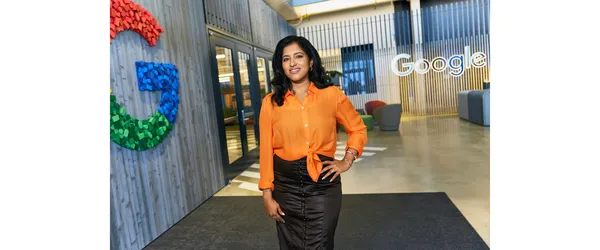 How AI is transforming ads and shopping experiences to help people discover and connect with businesses.
How AI is transforming ads and shopping experiences to help people discover and connect with businesses.
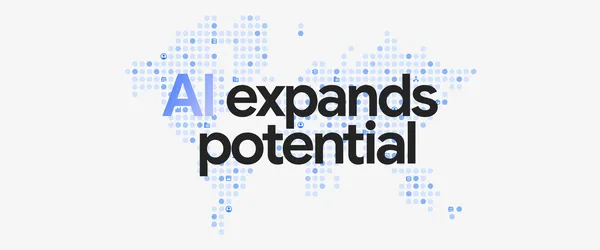 How generative AI will enhance creativity and performance for marketers to unlock an infinite universe of ideas.
How generative AI will enhance creativity and performance for marketers to unlock an infinite universe of ideas.
 Google AI is helping marketers engage consumers with new creative features, immersive formats, and Search Ads opportunities.
Google AI is helping marketers engage consumers with new creative features, immersive formats, and Search Ads opportunities.
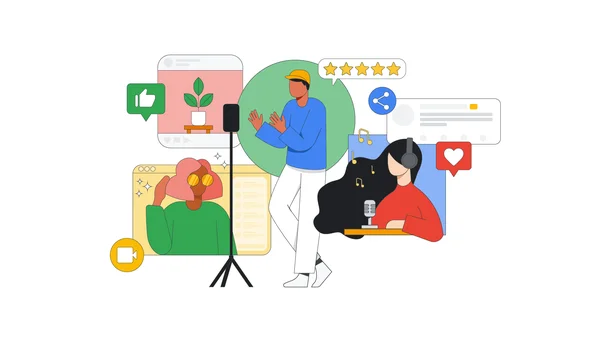 Learn how Demand Gen campaigns can help you drive better results across YouTube and Google. See new case studies, videos, tips, and more.
Learn how Demand Gen campaigns can help you drive better results across YouTube and Google. See new case studies, videos, tips, and more.
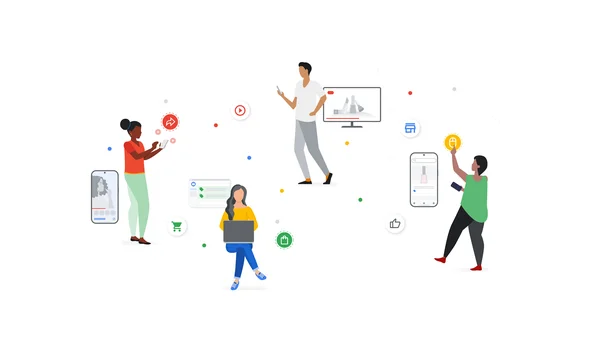 Google and YouTube’s new AI-powered solutions help advertisers multiply their creativity and generate demand.
Google and YouTube’s new AI-powered solutions help advertisers multiply their creativity and generate demand.
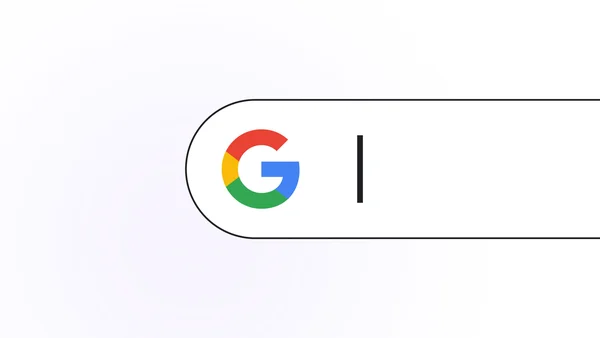 As we use the power of generative AI to create more natural and intuitive Search experiences, ads will continue to play an important role.
As we use the power of generative AI to create more natural and intuitive Search experiences, ads will continue to play an important role.
In the face of a changing privacy landscape, marketers need new measurement approaches that meet their objectives and put users first. This is why we’ve invested in new tools to help you future-proof your measurement.
One critical tool is machine learning, which can be used to fill the gaps in observed data and unlock new insights into consumer behavior. For example, conversion modeling powered by machine learning allows you to preserve measurement even when cookies or other identifiers aren’t present. Data-driven attribution in Google Ads takes this a step further. It uses advanced machine learning to more accurately understand how each marketing touchpoint contributed to a conversion, all while respecting user privacy.
As the industry continues to evolve, last-click attribution will increasingly fall short of advertisers’ needs. The most successful marketers will switch to a data-driven approach. While Google Ads offers data-driven attribution, some advertisers haven’t been able to use it due to minimum data requirements or unsupported conversion types. To help all advertisers take advantage of better attribution and improve their performance, we’re removing the data requirements and adding support for additional types of conversions. With these improvements, we're also making data-driven attribution the default attribution model for all new conversion actions in Google Ads.
Unlike other models, data-driven attribution gives you more accurate results by analyzing all of the relevant data about the marketing moments that led up to a conversion. Data-driven attribution in Google Ads takes multiple signals into account, including the ad format and the time between an ad interaction and the conversion. We also use results from holdback experiments to make our models more accurate and calibrate them to better reflect the true incremental value of your ads. And like all of our measurement solutions, we respect people's decisions about how their data should be used and have strict policies against covert techniques, like fingerprinting, that can compromise user privacy.
Advertisers around the world have seen better results by switching to data-driven attribution. When combined with automated bidding strategies, data-driven attribution can drive additional conversions at the same cost-per-acquisition. This is because our systems can better predict the incremental impact a specific ad will have on driving a conversion, and adjust bids accordingly to maximize your ROI.
Data-driven attribution allows us to assign the right credit to every touchpoint. With automated bidding and data-driven attribution, we've seen an 18% reduction in cost of sales over last-click.
Since we moved our search and display campaigns in Google Ads to data-driven attribution, we’ve seen an 8% increase in overall incremental conversions with an 8% lower cost per lead.
Today, data-driven attribution supports Search, Shopping, Display and YouTube ads. But we know that data-driven attribution can improve advertiser performance, regardless of campaign or conversion type. That’s why we’re adding support for more conversion types, including in-app and offline conversions. We’re also removing the data requirements for campaigns so that you can use data-driven attribution for every conversion action.
We'll roll out data-driven attribution as the default model for all new conversion actions starting in October and plan to have it in all Google Ads accounts by early next year. You'll still have the option to manually switch to one of the five rule-based attribution models. With these upgrades, data-driven attribution can help every advertiser clearly understand the full value of their Google Ads campaigns.
This is one example of our commitment to helping you make every marketing dollar count, even as the industry continues to shift. We’ll continue to work to use advances like machine learning to bring you measurement tools that deliver performance while also respecting user privacy.
In the face of a changing privacy landscape, marketers need new measurement approaches that meet their objectives and put users first. This is why we’ve invested in new tools to help you future-proof your measurement.
One critical tool is machine learning, which can be used to fill the gaps in observed data and unlock new insights into consumer behavior. For example, conversion modeling powered by machine learning allows you to preserve measurement even when cookies or other identifiers aren’t present. Data-driven attribution in Google Ads takes this a step further. It uses advanced machine learning to more accurately understand how each marketing touchpoint contributed to a conversion, all while respecting user privacy.
As the industry continues to evolve, last-click attribution will increasingly fall short of advertisers’ needs. The most successful marketers will switch to a data-driven approach. While Google Ads offers data-driven attribution, some advertisers haven’t been able to use it due to minimum data requirements or unsupported conversion types. To help all advertisers take advantage of better attribution and improve their performance, we’re removing the data requirements and adding support for additional types of conversions. With these improvements, we're also making data-driven attribution the default attribution model for all new conversion actions in Google Ads.
Unlike other models, data-driven attribution gives you more accurate results by analyzing all of the relevant data about the marketing moments that led up to a conversion. Data-driven attribution in Google Ads takes multiple signals into account, including the ad format and the time between an ad interaction and the conversion. We also use results from holdback experiments to make our models more accurate and calibrate them to better reflect the true incremental value of your ads. And like all of our measurement solutions, we respect people's decisions about how their data should be used and have strict policies against covert techniques, like fingerprinting, that can compromise user privacy.
Advertisers around the world have seen better results by switching to data-driven attribution. When combined with automated bidding strategies, data-driven attribution can drive additional conversions at the same cost-per-acquisition. This is because our systems can better predict the incremental impact a specific ad will have on driving a conversion, and adjust bids accordingly to maximize your ROI.
Data-driven attribution allows us to assign the right credit to every touchpoint. With automated bidding and data-driven attribution, we've seen an 18% reduction in cost of sales over last-click.
Since we moved our search and display campaigns in Google Ads to data-driven attribution, we’ve seen an 8% increase in overall incremental conversions with an 8% lower cost per lead.
Today, data-driven attribution supports Search, Shopping, Display and YouTube ads. But we know that data-driven attribution can improve advertiser performance, regardless of campaign or conversion type. That’s why we’re adding support for more conversion types, including in-app and offline conversions. We’re also removing the data requirements for campaigns so that you can use data-driven attribution for every conversion action.
We'll roll out data-driven attribution as the default model starting in October and plan to have it in all Google Ads accounts by early next year. You'll still have the option to manually switch to one of the five rule-based attribution models. With these upgrades, data-driven attribution can help every advertiser clearly understand the full value of their Google Ads campaigns.
This is one example of our commitment to helping you make every marketing dollar count, even as the industry continues to shift. We’ll continue to work to use advances like machine learning to bring you measurement tools that deliver performance while also respecting user privacy.
Getting the most out of your marketing investments requires a clear understanding of what actions people take after interacting with your ads. In today’s evolving privacy landscape, growing your business calls for new approaches to measurement that preserve advertising performance and also put the user first.
Now’s the time to adopt new privacy-safe techniques to ensure your measurement remains accurate and actionable. And while this can seem daunting, we’re here to help you succeed in a world with fewer cookies and other identifiers with new ways to respect user consent, measure conversions and unlock granular insights from your sites and apps.
Here's a preview of some of the product launches we'll be sharing at Google Marketing Livestream on May 27th.
Getting started with privacy-safe measurement requires building a foundation of first-party data. Investing in a strong tagging infrastructure helps you make the most of the data your consumers share with you and lets you accurately measure your campaign performance.
As consumers seek increased control over how their data is used, your methods for respecting their consent choices will also need to evolve. For advertisers operating in the European Economic Area and the U.K., Consent Mode helps you achieve this by adjusting how Google tags operate based on user consent choices for ads cookies or analytics cookies. When users don't consent to cookies, Consent Mode will use conversion modeling to recover, on average, more than 70% of ad-click-to-conversion journeys, ensuring that you continue to measure the complete performance of your media in a privacy-safe way.
To make it easier for your website to integrate with Consent Mode, we'll soon enable implementation directly from your Google Tag Manager account, where you’ll be able to modify and customize tag behavior in response to users' consent preferences. Accurate measurement that accounts for people's consent choices doesn’t have to be complicated, and our new solutions make sure that it isn’t.
A strong sitewide tagging and first-party data foundation enables measurement solutions to work together to collectively provide you with the most comprehensive reporting and optimization. Building on this foundation, we've developed an additional privacy-safe way to help you preserve accurate measurement when fewer cookies are available.
Enhanced conversions allow tags to use consented, first-party data to give you a more accurate view of how users convert after engaging with your ads. You'll also be able to get the data you need to unlock performance insights, like conversion lift, and improve measurement in cases when your ad is shown on one device and the user converts on another. Your first-party data is hashed to protect user privacy and ensure security, and you’ll receive aggregated and anonymized conversion reporting.
Advertisers currently testing enhanced conversions are already seeing positive results. U.K.-based retailer ASOS set up enhanced conversions across Search and YouTube to help them close measurement gaps due to browser restrictions and cross-device behavior. This enabled them to measure conversions that would otherwise not have been captured and improved return on ad spend (ROAS) with a recorded sales uplift of 8.6% in Search and 31% in YouTube.
Enhanced conversions helped establish a strong measurement foundation, off of which we can better measure the impact of our YouTube buys.
In addition to using modeling for more complete conversion measurement and optimization, modeling can also help you get deeper customer insights from your behavioral analytics data. Last year we announced the new Google Analytics, which uses machine learning to surface relevant marketing insights, such as a significant change in your campaign performance or the likelihood of your customers making a purchase.
Soon, we'll extend Google’s advanced machine learning models to behavioral reporting in Analytics. For example, if there is incomplete data in your User Acquisition report due to cookies not being available, we’ll now use modeling to help fill gaps for a more complete view of the number of new users your campaigns have acquired. With or without cookies, you’ll be able to enhance your understanding of the customer journey across your app and website and use those insights to improve your marketing.
We’re continuing to invest in next-generation privacy solutions to help advertisers navigate ongoing industry changes and preserve accurate conversion measurement.
You can find out the latest information about these new privacy-safe measurement solutions at Google Marketing Livestream 2021 on Thursday, May 27 at 8:00 a.m. PT / 11:00 a.m. ET.